Natural and built heritage to be conserved as Springleaf forested area is developed
Sign up now: Get ST's newsletters delivered to your inbox
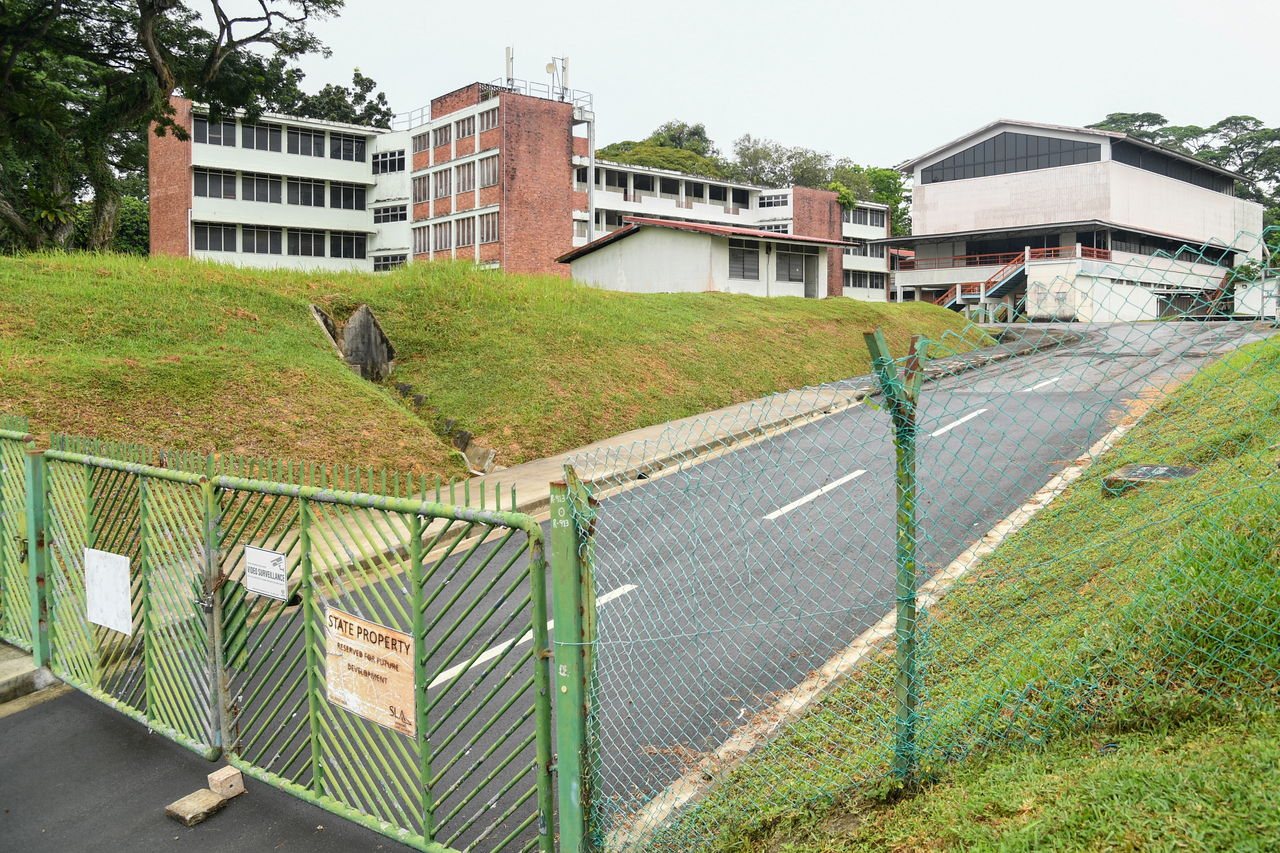
The former Upper Thomson Secondary School campus will be conserved and integrated into future developments in Springleaf.
ST PHOTO: EUGENE GOH
Follow topic:
SINGAPORE - Portions of Springleaf, a largely forested area, will be developed as a mixed-use site, with some of its natural and built heritage elements to be retained.
On Monday (June 6), the Urban Redevelopment Authority (URA) announced that housing will be built in the area to meet demand and make use of Springleaf MRT station on the Thomson-East Coast Line, which opened last year.
At more than 30ha, the site is bounded by Seletar Expressway, Mandai Road and Upper Thomson Road.
About half of it is currently zoned for residential, as well as mixed commercial and residential use, while about a quarter, or 8.5ha, is zoned as park land and the rest of the plot is a reserve site.
The URA said an environmental baseline study was conducted in 2018. It then engaged a multidisciplinary team, including ecologists and landscape architects, to "explore potential ideas for sensitive development that would protect the rich biodiversity of the area".
The agency commissioned an environmental impact assessment in 2020 to understand how its development plans would affect the site, which includes two zones that studies identified as significant conservation areas for biodiversity.
A URA spokesman told The Straits Times that based on recommendations of the impact assessment, it is now planning to expand the park area to 10ha to 15ha - about half the Springleaf site. The planned residences in the area will be private housing, he added.
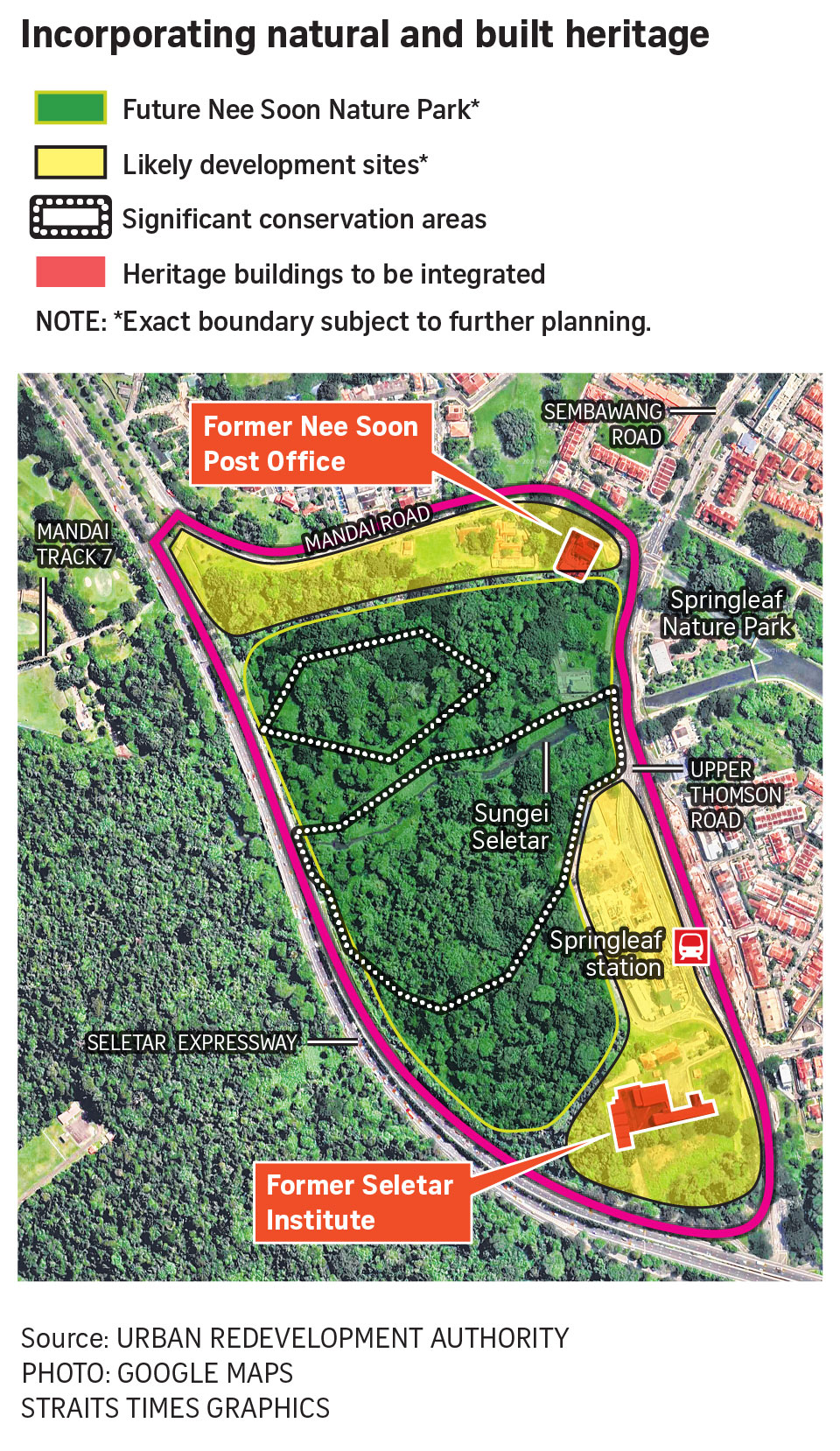
The National Parks Board said on Monday that the new park in Springleaf - Nee Soon Nature Park - was identified through a scientific study as a buffer for the Central Catchment Nature Reserve, and also an ecological link between it and the upcoming Khatib Bongsu Nature Park.
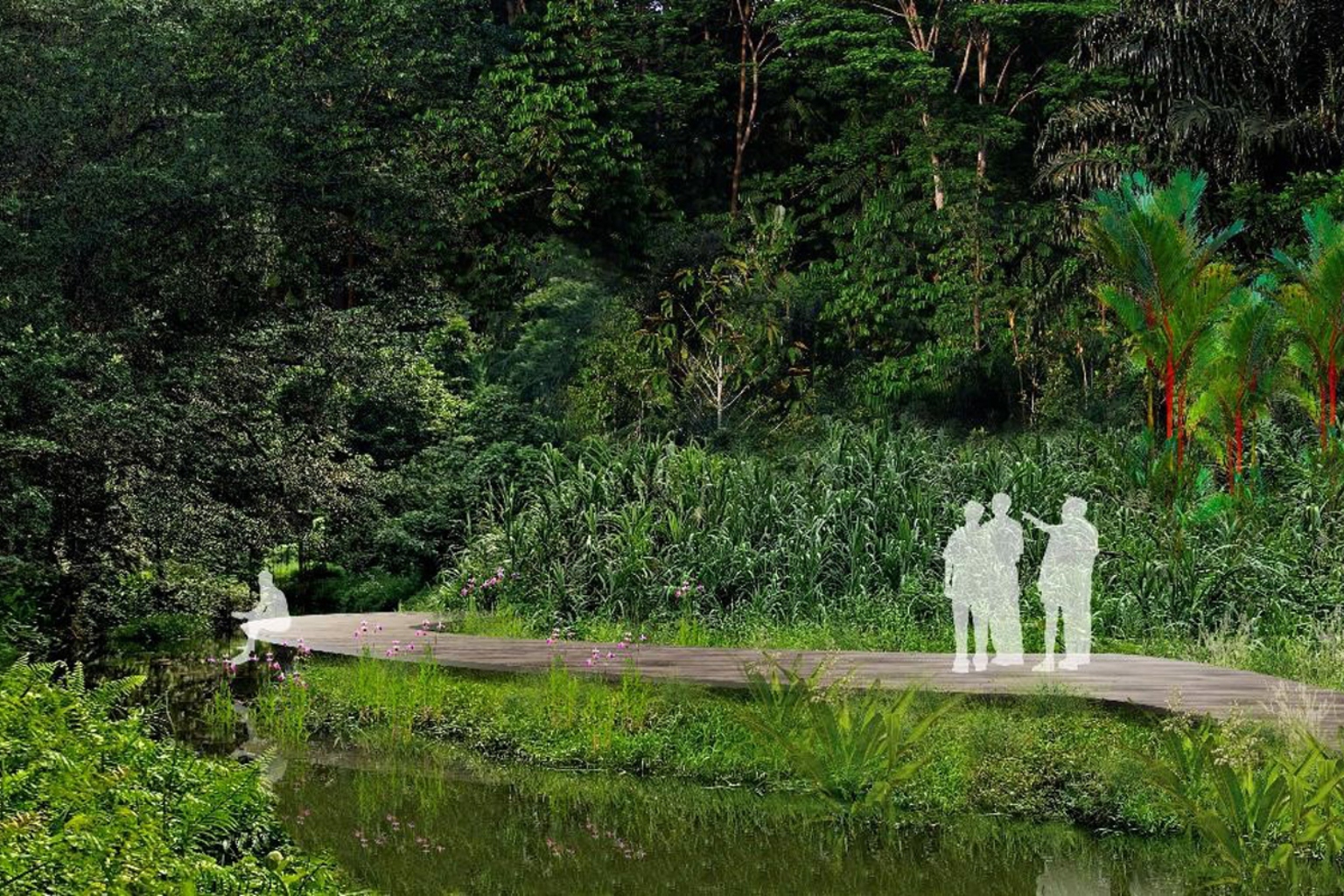
Based on URA's diagrams, Sungei Seletar, which runs through the site, will be retained as part of the park, while the authority said the immediate surroundings around significant biodiversity areas will also be kept.
URA added that upcoming buildings in the area will have small footprints to minimise habitat loss, and come with greener facades to avoid being hit by birds in flight.

Buildings will also be built on "disturbed ground" - referring to land previously affected by development - and less sensitive areas, it said, adding that development works will be phased to minimise environmental impact.
Besides natural heritage considerations, the new developments will also incorporate built heritage of the area.
The URA spokesman said this area was part of the former Nee Soon Village which served as a commercial centre in the north till the early 1980s.
The village was named after Lim Nee Soon, one of the pioneers of rubber planting in Singapore. He acquired land around Sungei Seletar for plantation use in 1905, and a village grew in the area in subsequent decades.
Public infrastructure that served the village, whose residents moved to the new town of Yishun in the 1970s, remain today as markers of the area's past.
URA said heritage landmarks such as the former Seletar Institute - which was originally Upper Thomson Secondary School's campus - and the former Nee Soon Post Office will be conserved and integrated into future developments.
Upper Thomson Secondary School was established in 1965, and then Prime Minister Lee Kuan Yew opened its campus in July 1966.
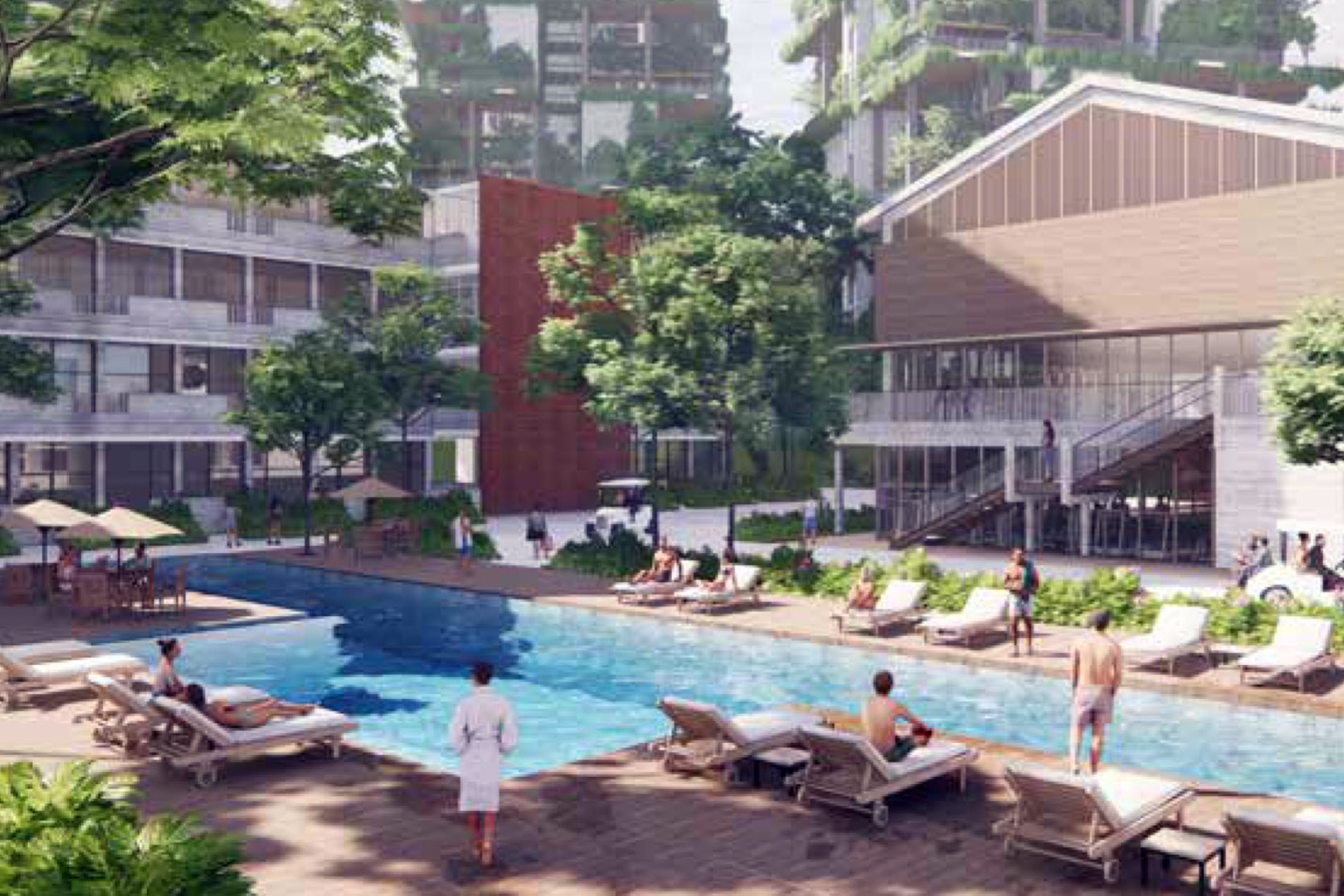
The campus was taken over by Seletar Institute, which was established in 1988, after the secondary school was relocated to Yishun. The institute was among four original centralised institutes in Singapore to offer three-year pre-university courses leading up to the Singapore-Cambridge GCE Advanced Level examinations, instead of the two-year courses offered at junior colleges.
Seletar Institute closed in the late 1998 due to falling enrolment, said the URA spokesman, who added that its signature T-shaped classroom block still remains.
About 650m away, the former Nee Soon Post Office in Mandai Road still bears marks of its past today, despite being adaptively reused over the years.
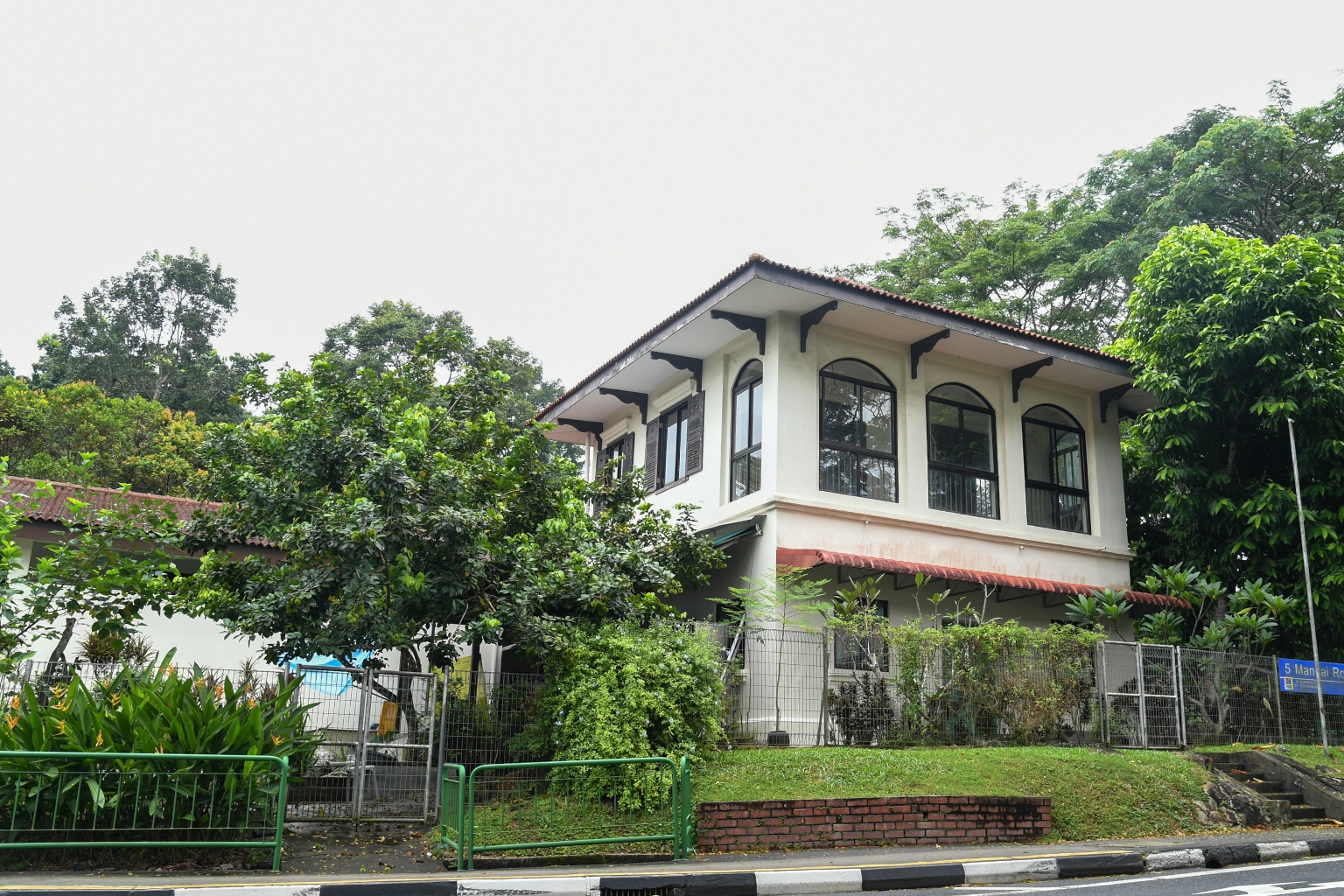
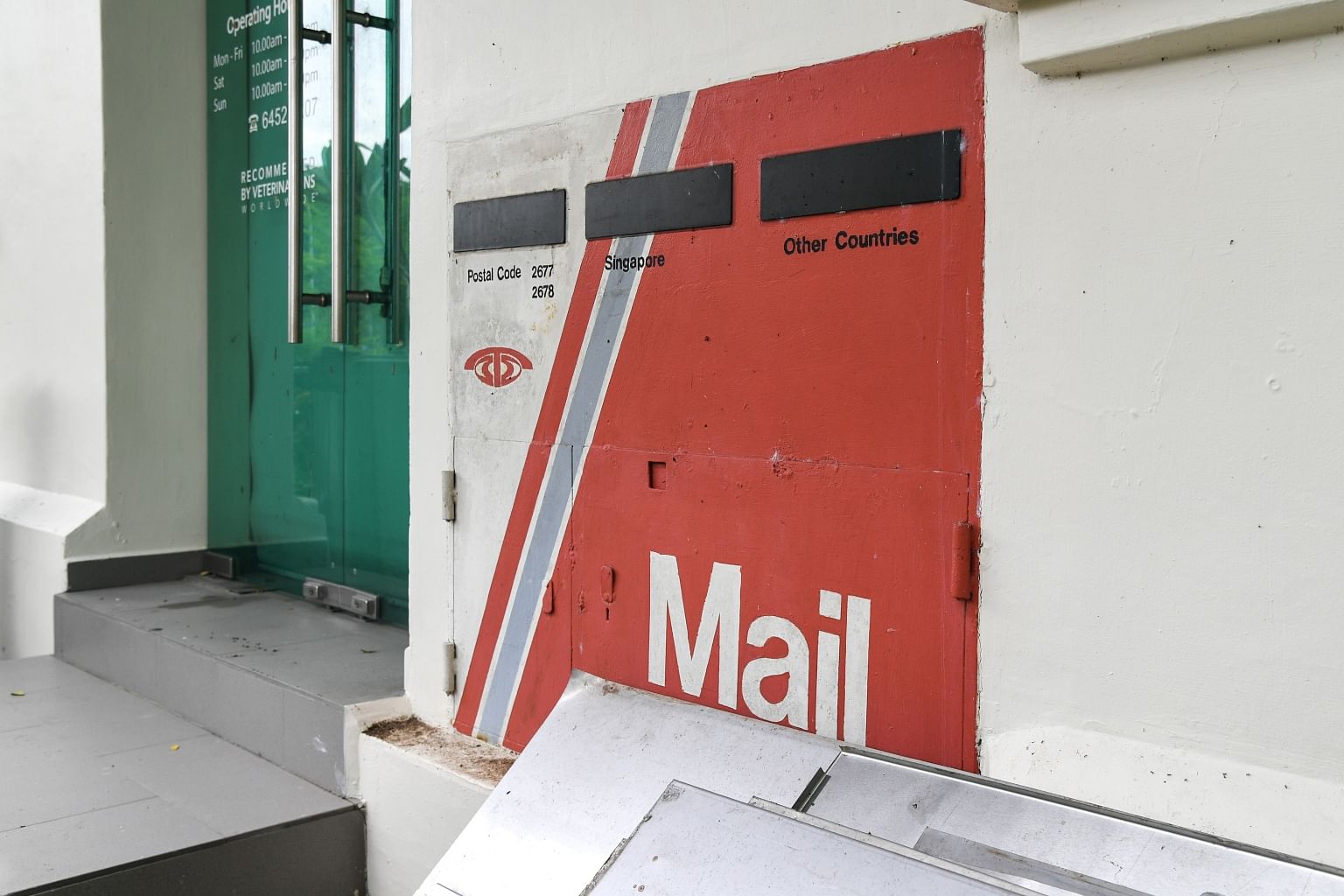
A white-and-orange post box, once a common sight in Singapore having been used by the Telecommunication Authority of Singapore, is still found at the building. Today's Singapore Post traces its history to the agency.
Nature Society (Singapore) president Shawn Lum said that the plans for Springleaf are the result of more than a decade of careful thinking, planning, and consulting.
“In a purely ecological sense, not building anything on the site might have given nature the best long-term chances of recovery,” he said.
“In a purely ecological sense, not building anything on the site might have given nature the best long-term chances of recovery,” he said.
However, he added that the proposed plans by MKPL Architects achieves a good balance between nature-sensitive development, habitat conservation and enhancement.
The plans are also grounded in the history and culture of the place, he said.
The full environmental impact assessment report for Springleaf is available on URA's website for public feedback from Monday to July 4.
The plans are also grounded in the history and culture of the place, he said.
The full environmental impact assessment report for Springleaf is available on URA's website for public feedback from Monday to July 4.
Following this, the URA will refine its plans and decide the exact size of the park and other land parcels. The master plan zoning for the site will also be updated if necessary.

